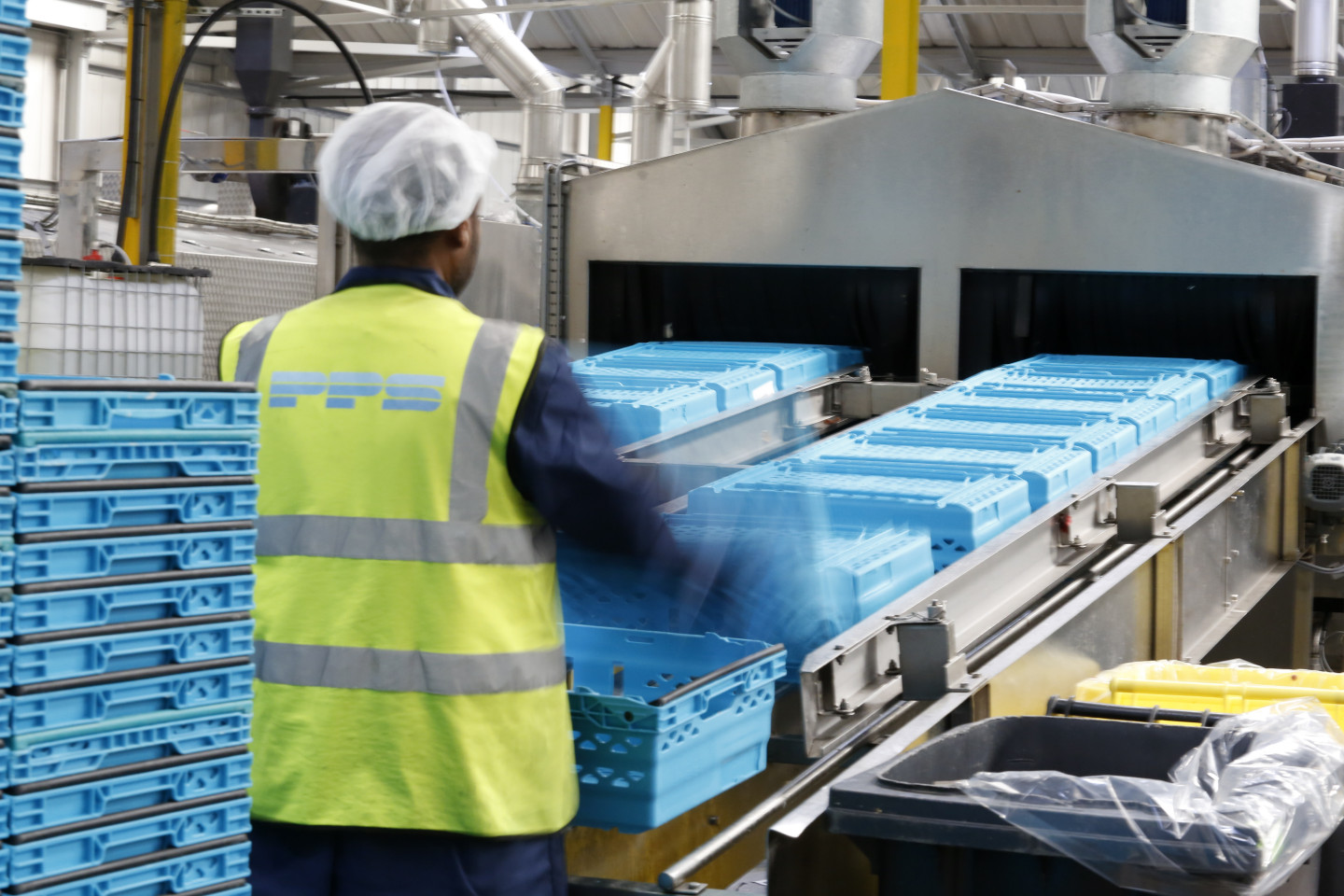As packaging waste raises increasing concerns, plastic crates offer a more sustainable solution for transporting goods. Unlike less durable wood or cardboard alternatives, which only allow for a single trip usage, plastic crates are suitable for rental models. Returnable packaging has a longer life because it can be easily monitored and maintained by the supplier, resulting in environmental benefits and costs savings for users.
Loop / Share
Crates. Plastic Packaging Solutions (Returnable transit equipment, England, 2014)
Interview with Lucy Allsebrook, Business Development Manager at PPS
What inspired the company’s interest in the Circular Economy?
Lucy Allsebrook: PPS were operating a plastic pallet pooling business which is one service of the now circular economy solution that we provide. We felt it the natural step to create “The Complete Package” which incorporates the rental, management, washing and transport for returnable transit packaging cycles in the supply chain providing all returnable packaging services in one place for a range of equipment. From this we invested in modern wash lines and facilities in order to support all of this in house.
Could you describe your process of developing the business model?
Lucy Allsebrook: It was important for us that the whole process was transparent and each user in the process had a complete understanding of the system. To support this, PPS developed its own in house online management and tracking system where all movements are recorded and each stage of the supply chain is aware of their responsibilities to the equipment.
How would you describe the different mindsets of Circular Thinking/Design for the CE versus traditional linear thinking for the linear economy?
Lucy Allsebrook: The linear economy might be interpreted as the use of single trip packaging in supply chains. So a product is created e.g. cardboard and polystyrene boxes, used once in the process before being disposed of. The mindset of the circular economy is different in that it is a thought process rather than just using what is put in front of you as a short term solution. You are considering the end outcome and a way for improvement to not only your business but the environment and environmental targets set out by WRAP UK.
What has been the most challenging part of the process?
Lucy Allsebrook: The most challenging part was the initial set up at PPS and ensuring we had everything in place to make the process work, it’s at this point you’re relying on external sources to deliver and install the modern machinery, often aspects out of our control. The most rewarding part is educating companies and reviewing their options. Often companies are “tasked” with creating a circular economy but they aren’t sure where to start or how to make it happen.
How have clients responded to the offering?
Lucy Allsebrook: Clients are often surprised how simple it is to make the switch from single trip packaging to the circular economy options, not only providing cost savings and reducing their environmental impact but providing a hassle free solution that is achievable and has a proven track record.
Next steps?
Lucy Allsebrook: PPS are continuing to invest in new equipment for the complete package service in order to meet demand from growing customers and new industries.
For anyone interested in this field, what books or articles would you recommend to read?
Click for article on the difference between a linear and circualr economy


